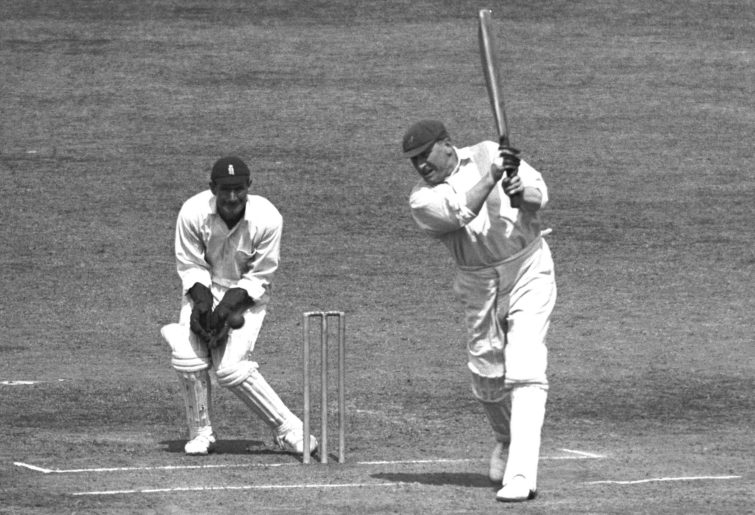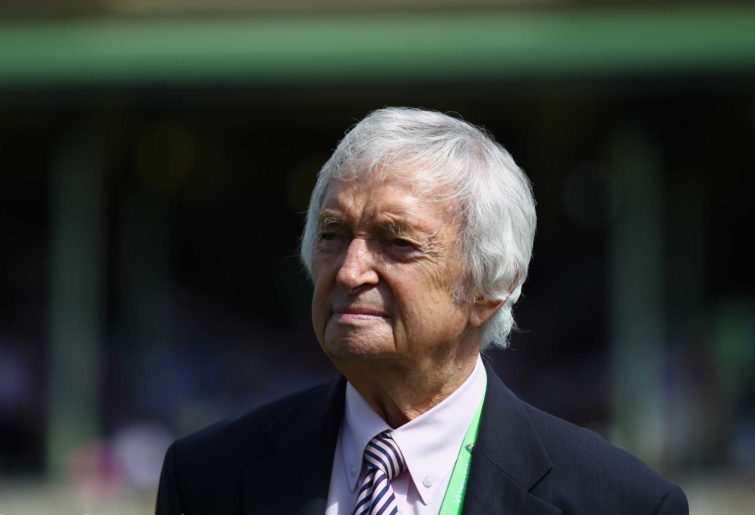In previous articles I have been looking at our great batsmen and bowlers and their performances in Test match wins.
In this article I will summarise the performances of some of our best all-rounders and see what they might tell us.
George Giffen: ten wins
Batting: 334 runs at 20.87 with no centuries (losses: 25.93, draws: 18). Top-six comparison: 28.98 (losses: 21.66, Draws: 39.39). Top-six batsman.
Bowling: 43 wickets at 16.30 (losses: 37.89, draws: 24.78). Other bowlers comparison: 17.46 (losses: 29.52, draws: 29.96). Off spin.
Giffen was our first great all-rounder. His numbers show a batsman who was very good in losses (almost 20 per cent better than his peers) but a bit behind the specialists in wins and draws. Giffen’s bowling average in wins is very special, although only 6.6 per cent better than his peers, so it looks like it was tough for all batsmen in those wins. This also plays out with Giffen’s own batting average in those games (only 20.9).
For players with at least ten victories, only legendary leg spinner Bill O’Reilly and 1960s left-arm seamer Alan Davidson have better bowling averages in wins. Giffen was also 17 per cent better than his peers in draws but had no impact at all in losses.

(Photo by Daniel Pockett – CA/Cricket Australia via Getty Images )
Monty Noble. 21 wins
Batting: 890 runs at 26.17 with no centuries (losses: 36.73, draws: 32.7). Top-six comparison: 37.43 (losses: 23.97, draws: 32.05). Top-six batsman.
Bowling: 87 wickets at 18.36 (losses: 34.87, draws: 48.27). Other bowlers comparison: 21.76 (losses: 31.9, draws: 32.40). Right-arm medium pace.
I spent some time on Monty Noble’s batting in an earlier article. He is pretty much the only batsman to have played a significant amount of matches with a batting average in losses that is higher than his average in either wins or draws. Noble was a man for a crisis, averaging over 12 runs more than his peers in losses.
On the bowling front, Noble performed very well in wins, over 15 per cent better than his fellow bowlers in those wins. He was not as good in losses and draws, so likely was deadly when conditions suited his medium-pace cutters.
Warwick Armstrong: 28 wins
Batting: 1858 runs at 48.89 with six centuries (losses: 26.29, draws: 31.16). Top-six comparison: 36.72 (losses: 29.47, draws: 32.84). 41 out of 65 innings in the top six.
Bowling: 37 wickets at 33.43 (losses: 32.6, draws: 35.13). Other bowlers comparison: 22.36 (losses: 36.59, draws: 41.17). Right-arm medium pace.
‘The Big Ship’ was primarily a batting all-rounder and his performance with the willow in wins is top notch. His comparison to the other batsmen in the top six in those matches is a brilliant 36.72 per cent better. He was not nearly as effective in losses and draws, but wasn’t too far off his peers.

(PA Images via Getty Images)
Armstrong was a more occasional bowler at Test level, taking only around 1.3 wickets per match in wins and his stats are well below the other bowlers in his wins. This points to Armstrong only being required if breakthroughs were not coming for his main bowlers. This is supported by Armstrong’s performances in losses and draws, where he is 11 per cent and 14.6 per cent respectively better than his peers.
Keith Miller: 31 wins
Batting: 1779 runs at 43.39 with four centuries (losses: 17.0, draws: 41.57). Top-six comparison: 52.51 (losses: 20.04, draws: 40.42). Top-six batsman.
Bowling: 113 wickets at 19.6 (losses: 22.08, draws: 35.18). Other bowlers comparison: 21.97 (losses: 32.76, draws: 34.79). Right-arm pace.
Keith Miller is the first all-rounder in the list to score over 1000 runs and take over 100 wickets in Australian wins. His batting average is good, but the average of his top-six teammates is even higher. I guess Don Bradman, Neil Harvey, and others were quite good! Miller’s batting compared to his peers was actually best in draws. He struggled in losses.
On the bowling side of things, Miller featured heavily in my previous articles as one of the true stars of the game. His raw bowling average in wins is 12th all time for Australia (minimum ten wins). In losses his average is the sixth best of all time (minimum five defeats) and is more than 32 per cent better than his peers. Only in draws do his figures come back to be on par with his fellow bowlers in those matches.

(Photo by Topical Press/Getty Images)
Alan Davidson: 16 wins
Batting: 447 runs at 26.29 with no centuries (losses: 19.2, draws: 23.45). Top-seven comparison: 39.88 (losses: 22.58, draws: 38.1). 52 out of 61 innings at seven or lower. (Note: where a player has primarily batted outside the top six, his peer comparison has been expanded to top seven)
Bowling: 89 wickets at 16.04 (losses: 17.13, draws: 31.32). Other bowlers comparison: 21.90 (losses: 36.04, draws: 33.17). Left-arm pace.
Alan Davidson is another whose bowling statistics have featured heavily in a previous article. Forget all-rounders, Davidson was the only bowler other than Dennis Lillee to be either included or just miss out in the best ever teams for performances in all of wins, losses and draws. In losses in particular an average of 17.13 compared to his peers going at 36.04 is scarcely believable.
Davidson was more of a bowling all-rounder and generally batted out of the top six. Looking above, he performed best compared to his peers in losses, but in generally was good for handy performances. In current terms he might be a bit like Mitchell Johnson at his batting best.
Richie Benaud: 24 wins
Batting: 892 runs at 30.75 with two centuries (losses: 15.73, draws: 25.39). Top-seven comparison: 42.55 (losses: 26.35, draws: 41.95). 54 out of 79 innings at seven or lower.
Bowling: 128 wickets at 18.32 (losses: 43.03, draws: 32.52). Other bowlers comparison: 21.01 (losses: 31.5, draws: 36.9). Leg spin.
Richie Benaud was also more of a bowling all-rounder and what a bowler he was. His efforts are examined in my article on spinners, but suffice to say that a winning bowling average of 18.32 is Australia’s seventh best in history (minimum ten wins). It is 12.8 per cent better than his peers in those matches. Benaud was also pretty good in draws but terrible in losses.

(Photo by Ryan Pierse/Getty Images)
With the bat, was a generally healthy contributor and did his best work in wins.
Shane Watson: 29 wins
Batting: 1706 runs at 34.81 with two centuries (losses: 30.11, draws: 44.8). Top-six comparison: 47.58 (losses: 26.31, draws: 51.91). Top-six batsman.
Bowling: 37 wickets at 29.59 (losses: 32.34, draws: 45.8). Other bowlers comparison: 22.59 (losses: 41.02, draws: 40.23). Right-arm medium pace.
The much maligned Shane Watson. As an all-rounder he was more of a Warwick Armstrong than a Keith Miller. His wickets per Test was just under 1.3 whether in wins, losses or draws.
As a batsman his performances in losses was excellent, being nearly on par with his stats in wins and being more than 14 per cent better than his fellow top-six batsmen. In draws, his performance was decent, but he didn’t do a massive amount in wins.
As a bowler playing a holding role, his primary value was economy rate. In wins, losses and draws his economy rate was much better than his peers. Like Watson’s batting it was his performance in losses that stood out. Both his bowling average and strike rate were more than 21 per cent better than his peers in defeats. So Watson was a top performer with both bat and ball when his teammates struggled.
So what does all of that tell us? Mostly that our all-rounders are very good bowlers: Giffen, Noble and especially Miller, Davidson and Benaud. Only Armstrong was an undisputed batting champion. As expected it is Keith Miller that is closest to holding his own in both disciplines.
Putting Shane Watson to one side, each player here excelled in wins in their primary discipline, but Giffen, Noble, Armstrong and Watson also stepped up quite well in losses in their non-specialist area.
Thanks to everyone who has followed these articles aver the past couple of months. Look out for similar articles on Australia’s great ODI players in coming weeks.
































































































